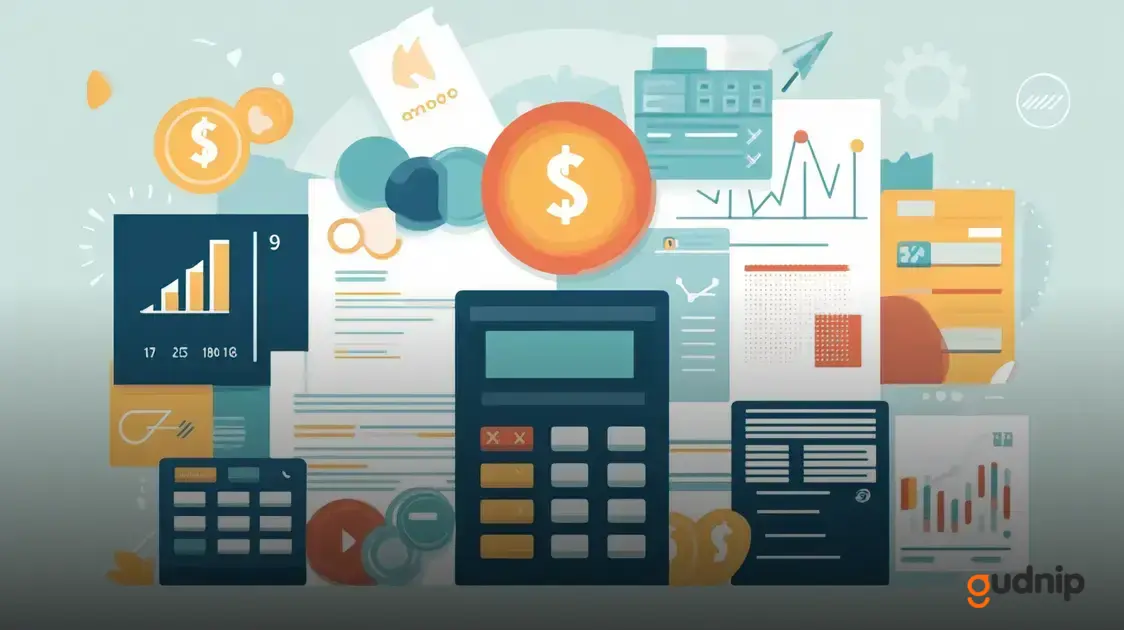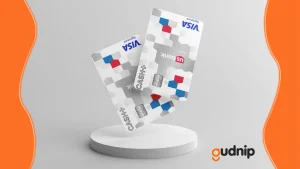If you’re looking for the best personal loan options, you’ve come to the right place.
Understanding your choices, comparing lenders, and knowing what to avoid is key to making an informed decision.
Understanding Personal Loans
Understanding personal loans is essential to making informed financial decisions.
A personal loan is a type of unsecured loan that you can use for various purposes, such as consolidating debt, financing a big purchase, or covering unexpected expenses.
Unlike a mortgage or auto loan, personal loans do not require collateral, meaning you don’t have to risk losing your property if you fail to repay the loan.
How Personal Loans Work
When you apply for a personal loan, lenders evaluate your creditworthiness based on your credit score, income, and debt-to-income ratio.
After a successful application, you receive a lump sum that you will repay in fixed monthly installments over a specified timeframe, usually ranging from two to five years.
Why Choose Personal Loans?
Personal loans can be a great choice if you need quick cash without tying down your assets.
They often come with competitive interest rates compared to credit cards, making them a smart option for debt consolidation.
Additionally, the predictable monthly payments can help you budget effectively.
Types of Personal Loans
There are two main types of personal loans: secured and unsecured.
Secured loans require collateral, such as a vehicle or savings account, which can result in lower interest rates.
Unsecured loans, on the other hand, do not require collateral but may come with higher rates due to the increased risk for lenders.
The Application Process
The application process for personal loans usually involves submitting a loan application, providing documentation of your income, and undergoing a credit check.
Many lenders offer online applications, making it easier and quicker to get funds when you need them.
Top Personal Loan Options Available
When considering the top personal loan options available, it’s important to know what lenders may offer the best terms and features.
Here are some popular options you might explore:
1. SoFi Personal Loans
SoFi is well-known for its personal loans that come with no fees and competitive rates.
Borrowers can access amounts from $5,000 to $100,000 with flexible repayment terms.
2. Marcus by Goldman Sachs
Marcus offers personal loans with no fees and a strong reputation for excellent customer service.
Loan amounts range from $3,500 to $40,000, making it a popular choice for many.
3. Discover Personal Loans
With Discover, you can borrow from $2,500 to $35,000.
They also provide a 30-day money-back guarantee on your loan, allowing for peace of mind.
4. LendingClub
LendingClub provides peer-to-peer loans where individuals can lend money directly to others.
They offer amounts from $1,000 to $40,000 and accept various credit scores.
5. Upstart
Upstart is unique as it considers factors beyond credit scores, like education and job history. Borrowers can access amounts from $1,000 to $50,000.
6. LightStream
LightStream, a division of SunTrust Bank, offers competitive interest rates and is known for quick funding. Their loans range from $5,000 to $100,000.
7. PersonalLoans.com
This platform connects borrowers with a network of lenders, providing access to loans between $1,000 and $35,000.
It’s great for those with varied credit backgrounds.
Each of these options has its features and benefits. Make sure to review and compare them to find the right fit for your financial needs.
Factors to Consider When Choosing Loans

When selecting a personal loan, it’s important to evaluate several factors to consider when choosing loans. Here are the key aspects to weigh:
1. Interest Rates
Compare interest rates, as they significantly affect your monthly payments. Look for competitive rates that suit your budget and minimize your total payment.
2. Fees
Understand any fees associated with the loan. Some lenders charge origination fees, late payment fees, or prepayment penalties that can increase the loan’s total cost.
3. Loan Amount
Consider how much you need to borrow. Ensure the lender offers loan amounts that meet your financial requirements without overextending yourself.
4. Repayment Terms
Look at the loan’s repayment terms, including the duration.
Shorter terms generally mean higher monthly payments but less interest paid overall, while longer terms may lower your monthly payment but increase total interest.
5. Eligibility Requirements
Each lender has different eligibility criteria. Check your credit score and ensure you meet the lender’s requirements before applying to avoid unnecessary inquiries.
6. Customer Service
Good customer service can make a significant difference. Research how lenders treat their customers and the support they provide throughout the loan process.
7. Loan Purpose
Determine the purpose of the loan and ensure it’s a suitable option. For specific needs like medical bills or home improvement, some loans may offer better terms.
8. Flexible Options
Some loans offer flexibility in repayment or allow you to defer payments in certain situations. This flexibility can help manage unexpected life changes.
Assessing these factors will empower you to make a well-informed choice when it comes to borrowing.
Comparing Interest Rates on Personal Loans
When comparing interest rates on personal loans, it’s vital to understand how rates vary and what affects them. Here’s what to consider:
1. Types of Interest Rates
Interest rates can be either fixed or variable.
A fixed interest rate stays the same throughout the loan term, while a variable interest rate can change based on market conditions.
2. Annual Percentage Rate (APR)
The APR reflects the total cost of the loan, including the interest rate and any fees.
Comparing APRs from different lenders gives you a clearer picture of what you’ll pay.
3. Credit Score Impact
Your credit score plays a significant role in determining the interest rate you qualify for.
Higher credit scores typically yield lower rates, while lower scores may lead to higher rates.
4. Lender Competition
Different lenders may offer various rates. Shopping around and comparing offers helps you find the best rate available.
Consider online lenders, credit unions, and traditional banks.
5. Loan Amount and Term
Your desired loan amount and repayment term can also affect rates.
Generally, smaller amounts and shorter terms may have higher rates, while larger amounts with longer terms tend to have lower rates.
6. Pre-Qualification
Many lenders offer pre-qualification, allowing you to check your potential rates without impacting your credit score.
This step is useful for understanding what you might expect.
7. Rate Lock Options
Some lenders allow you to lock in a rate, protecting you from potential increases during the application process.
This can be beneficial if you expect rates to rise.
8. Read the Fine Print
Always read the fine print. Look for any clauses related to rate changes, fees, or penalties that may apply.
This ensures you fully understand your loan terms.
By taking these factors into account, you can make an informed decision about the best interest rates for your personal loan needs.
How to Apply for Personal Loans
Applying for personal loans involves a few straightforward steps. Here’s a guide on how to apply for personal loans:
1. Check Your Credit Score
Before applying, check your credit score. Many borrowers use free online services to find their score. A higher score can help you secure better rates.
2. Decide on the Loan Amount
Determine how much money you need. Consider your situation carefully to avoid borrowing more than necessary.
Having a clear amount helps lenders assess your request.
3. Research Lenders
Look at various lenders. Compare their terms, interest rates, and any fees. Different lenders may have different offers, so take your time to find the best one.
4. Gather Necessary Documents
Prepare your financial documents. This often includes proof of income, identification, and credit history.
Having these documents ready speeds up the application process.
5. Complete the Application
Fill out the application form provided by the lender.
This can usually be done online, over the phone, or in person. Make sure to provide accurate information.
6. Submit Your Application
Once your application is complete, submit it to the lender. They may do a soft credit check at this point to review your creditworthiness.
7. Wait for Approval
After submitting your application, wait for a response. Most lenders communicate their decision quickly, often within a few days.
8. Review Loan Offer
If approved, carefully review the loan offer. Check the interest rate, repayment terms, and any fees.
Make sure you are comfortable with the agreement before accepting it.
9. Accept the Loan
If you are happy with the terms, accept the loan. You will likely need to sign documents and may need to set up a direct deposit for the funds.
10. Manage Your Payments
Once you have the loan, keep track of your payments. Set reminders for due dates to avoid missed payments or fees, ensuring you stay on track.
Recommended Lenders for Personal Loans

When looking for the best personal loan options, it’s important to choose from recommended lenders for personal loans. Here are some top choices that stand out:
1. SoFi
SoFi offers personal loans with competitive rates and no fees.
They allow you to borrow between $5,000 and $100,000, making them a great option for various needs.
2. Marcus by Goldman Sachs
Marcus is popular for its no fee loans and excellent customer service.
You can borrow amounts from $3,500 to $40,000, and they offer personalized repayment options.
3. Discover Personal Loans
Discover provides loans with no hidden fees and allows borrowers to access between $2,500 and $35,000.
Their cash-back reward bonus for on-time payments is an added benefit.
4. LendingClub
LendingClub is known for its peer-to-peer lending model and flexible loan amounts ranging from $1,000 to $40,000.
It’s a good choice for those with varying credit scores.
5. Upstart
Upstart uses alternative data such as education and job history, which broadens approval chances. You can secure amounts between $1,000 and $50,000.
6. LightStream
LightStream offers low-interest rates and a wide range of loan amounts from $5,000 to $100,000. They are known for fast funding and excellent customer support.
7. Prosper
Prosper allows borrowers to access personal loans ranging from $2,000 to $40,000.
They also focus on peer-to-peer lending and can be a good option for those seeking flexible financing.
These lenders provide a mix of flexible terms, competitive rates, and excellent customer service, making them worthy of consideration when applying for a personal loan.
Common Mistakes to Avoid with Personal Loans
When navigating personal loans, it’s crucial to be aware of common mistakes to avoid with personal loans. Here are some pitfalls to steer clear of:
1. Ignoring Your Credit Score
Your credit score significantly affects your loan terms. Failing to check it before applying can lead to unexpected surprises in interest rates or even disqualification.
2. Not Shopping Around
Many borrowers make the mistake of accepting the first loan offer they receive. Always compare multiple lenders to find the best rates and terms available.
3. Over-Borrowing
Borrowing more money than you need can put you in a difficult financial situation. Assess your needs carefully and only take what is necessary to avoid excessive debt.
4. Ignoring Fees
Some loans come with hidden fees, such as origination fees or prepayment penalties. Always read the terms carefully and account for these fees in your total cost.
5. Not Understanding the Terms
Failing to fully grasp the loan’s terms and conditions can lead to unpleasant surprises later.
Ensure you understand interest rates, repayment schedules, and any potential penalties.
6. Missing Payments
Missing payments can hurt your credit score and result in late fees. Set up reminders or automatic payments to keep track of your loan commitments.
7. Not Considering Budget Impact
Before applying, evaluate how the loan payments will fit into your monthly budget. Don’t commit to a payment that you cannot comfortably afford.
8. Rushing the Application Process
Taking your time to gather necessary documents and research options is essential. Rushing can lead to mistakes that affect your loan approval and terms.
Avoiding these common mistakes can help ensure a smoother borrowing experience and better financial outcomes.
Benefits of Personal Loans for Borrowers
Personal loans offer several benefits for borrowers that can enhance financial flexibility. Here are some key advantages:
1. Quick Access to Funds
Personal loans provide quick access to cash, often allowing borrowers to receive funds within a few days. This speed can be crucial in emergencies or urgent situations.
2. Flexibility of Use
Borrowers can use personal loans for various purposes, such as consolidating debt, covering medical expenses, or financing home improvements.
This versatility makes personal loans attractive for many.
3. Fixed Monthly Payments
Many personal loans come with fixed interest rates and monthly payments.
This predictability makes budgeting easier for borrowers as they know exactly what to expect each month.
4. Lower Interest Rates Compared to Credit Cards
Personal loans often have lower interest rates than credit cards.
This can save borrowers money, especially when consolidating high-interest debt into a single loan.
5. No Collateral Required
Most personal loans are unsecured, meaning borrowers do not need to put up assets like their homes or cars as collateral.
This reduces risk for borrowers who may not have collateral.
6. Improve Credit Score
Making timely payments on a personal loan can help improve a borrower’s credit score. A better credit score opens up more lending opportunities in the future.
7. Consolidation of Debt
Personal loans can be used to consolidate multiple debts into one manageable monthly payment. This simplifies finances and may lower overall interest costs.
8. Potential Tax Benefits
In some cases, the interest on personal loans may be tax-deductible, particularly if the funds are used for major expenses such as home improvements.
Be sure to check IRS guidelines for specific eligibility.
These benefits make personal loans a viable option for many individuals looking to meet financial needs or goals.
In Conclusion: Finding the Best Personal Loan Options
Choosing the right personal loan can significantly enhance your financial situation, offering access to funds with flexible usage and competitive rates.
Understanding your financial needs, evaluating different lenders, and being cautious of common pitfalls are key steps in the loan process.
By leveraging the benefits of personal loans, such as quick access to cash and fixed monthly payments, you can make informed decisions that align with your goals.
Remember to compare interest rates, understand loan terms, and seek out lenders that will support your financial journey.
Making thoughtful choices when applying for personal loans will empower you to achieve your financial objectives and secure a stable financial future.





